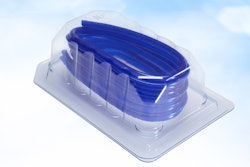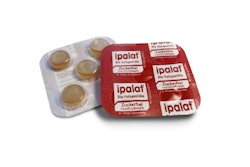February 2019 marked the compliance deadline with the EU Falsified Medicines Directive, while companies remain in varying states of readiness. Contrasted with U.S. DSCSA requirements, the EU regulations pose unique challenges.
“The main difference from U.S. to Europe is the sheer number of SKUs, markets and products,” says Daniel Tedham, Managing Director of Wasdell Manufacturing, a division of the Wasdell Group. “The U.S. has one market and database. Compare this to Europe where there are many countries with many different languages–which equate to different SKUs as well as different healthcare authorities–and you can see the obvious added complexity.”
In Europe, while there will be one hub and database, some countries will still require different formatting and print layout for serialization. Batch sizes required are different as well. “Put simply, it is not going to be consistent across the board. There are also different reimbursement requirements in countries such as France and Italy and different artworks with individual country requirements that need to be met. This is where flexibility and reactivity are required.”
U.K.-based outsource partner to the life science sector, The Wasdell Group operates three facilities, with a fourth to open in Ireland in 2019. In total, the group runs 29 packaging suites across all three sites: 16 in Swindon, nine in Burnley and four in Newcastle.“Across the group we have cleanrooms operating to Grade D and Grade C, with two having the capability for Grade B,” says Tedham. “Packaging largely takes place in a Grade D environment. On several of the lines we can also control humidity and have two lines with high containment capabilities.”
The company works with a range of packaging formats:
- Blisters (thermoform and cold-form)
- Container filling of solid dose, powders, liquids
- Sachets
- All types of secondary packing i.e. cartoning and rework, serialization
Volumes range from small orders of a few hundred units all the way to batches of 300,000. “As a CMO/CPO we have to offer flexibility. If the product is relatively standard and high volume, clients will often look to do it in-house, so we rarely deal with orders of vast quantities,” he says. The company typically serves customers whose products are complex, or the volumes do not warrant having internal operations, but require fast turnaround.
Flexibility
Flexible serialization capabilities are non-negotiable for the Wasdell Group. “We could be running one product in the morning and another on the same line in the afternoon. We have to create flexibility through our people, facilities and equipment as a contract service provider and fulfill customers’ requirements. Serialization needed to be and has been met with the same ethos,” says Tedham.
With such varying packaging capabilities, the CMO required flexible equipment. “We have inline serialization capabilities for higher volume production, we then have a couple of mobile machines and several offline options.” The company selected Optel Group as its machine supplier.
The key for Wasdell Group in their vendor selection process was service. “We all know these companies are experiencing significant demand at the moment, so their availability and reactivity is really being tested. We chose our partners based on how they reacted to our requirements and their systems functionality. They were fully aware of our timelines and assured us that they could meet them. These were the ultimate factors rather than solely price,” Tedham notes.
Implementation
When they sought to implement serialization, the Wasdell Group opted to implement full aggregation from the start. “It is inevitable that it will become a compulsory requirement in the coming years, so we wanted to make the investment at the beginning. The majority of our customers want to implement full aggregation and in addition, our increasing portfolio in the U.S. market means this was also a legal requirement for us. As always with new requirements and technology it is also important that people gain experience and training on the equipment and it’s better to do this as early as possible,” explains Tedham.
Operational impacts
From an operational perspective, Tedham notes that serialization adds time, cost and waste to the process as well as the requirement for additional resources. “However, it exists to protect the patient from counterfeit product and this is always the ultimate goal for everyone working within the pharmaceutical sector. There is discussion surrounding the operational efficiencies that serialization data could potentially help the industry realize but this will take time to explore,” he says.
Contingency plans
Tedham says it’s also important for companies to have contingencies in place, not just with respect to people but with the equipment itself. “If you cannot serialize due to equipment downtime, then you cannot make product. This is why we have a number of solutions at each site, some being standalone, off-line,” he explains. “This means product can still be produced while awaiting systems to come back on-line and in the very rare case of equipment downtime.”
Sidebar: Operator Training
Any new process requires verification and improvement before all staff are trained. “Operators then need to get used to it until it becomes business as usual” and the process quickens, says Tedham.
“Training cannot be completed quickly, it was important that all stakeholders understood functionality and capabilities at the start to minimize timely and costly issues later down the road. It has and will continue to be a learning curve for many months to come, not to mention it is likely there will be changes made to these initial regulations. That’s why we chose to have the capabilities implemented so early before it became a necessity to allow us to fully test our solution ahead of schedule.”
Wasdell Group trained existing staff to be subject-matter experts on serialization and then back-filled the employees’ previous roles. It was important that the team was already up-to-speed with operations, products, procedures and practices before adding the additional understanding and training for serialization.
“Everyone continues to learn, and we have put programs in place as well as continued to work closely with our partners to ensure we have the best understanding of the landscape as it continues to evolve,” says Tedham. “However, you only really learn when you start doing it. With so many customers and products with their own serialization partners and requirements, we have been very clear with our customers that we needed to start the implementation process many months ago rather than wait for the deadline.”



















